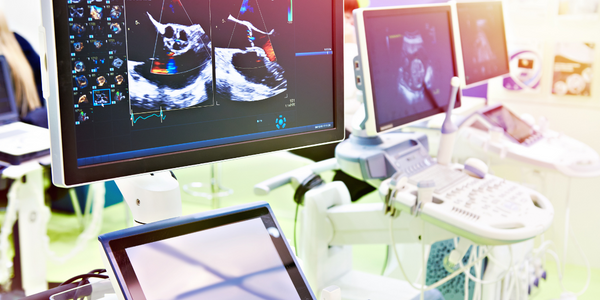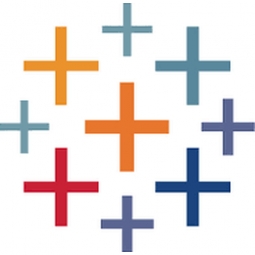Download PDF
UC Irvine Medical Center: Using Tableau for Real-Time Data Visualization
Technology Category
- Application Infrastructure & Middleware - Data Visualization
Applicable Industries
- Healthcare & Hospitals
Applicable Functions
- Business Operation
- Quality Assurance
Use Cases
- Predictive Quality Analytics
- Real-Time Location System (RTLS)
Services
- Data Science Services
The Challenge
The University of California, Irvine Medical Center was struggling with the challenge of understanding and presenting their vast amounts of data to the community. They had spreadsheets, Access databases, and were on the path to a data warehouse, but they lacked a tool that could effectively visualize this data. They needed a solution that could work within their current environment and also in the future. The IT department did not want to be the report writers and wanted a self-service model where the people who knew the data could develop their own visualizations and reports.
About The Customer
The University of California, Irvine Medical Center is a top-ranked American hospital, according to U.S. News & World Report. It is the only university hospital in Orange County. The medical center is committed to providing the best quality healthcare for patients and uses data to understand best practices. Charles Boicey, the informatics solutions architect at the medical center, is responsible for orchestrating the use of data to improve patient care.
The Solution
The medical center adopted Tableau, a data visualization tool, to help them understand and present their data. Charles Boicey discovered Tableau through a Google search and found that it could quickly attach to a spreadsheet and generate a visualization of quality data. This solution allowed the medical center to understand their data in near real-time, which is crucial in a healthcare environment where patient lives are at stake. The implementation of Tableau was rolled out to each department, starting with one or two analysts. The medical center also purchased a Tableau Server, which serves as their BI portal for the enterprise.
Operational Impact
Related Case Studies.

Case Study
Hospital Inventory Management
The hospital supply chain team is responsible for ensuring that the right medical supplies are readily available to clinicians when and where needed, and to do so in the most efficient manner possible. However, many of the systems and processes in use at the cancer center for supply chain management were not best suited to support these goals. Barcoding technology, a commonly used method for inventory management of medical supplies, is labor intensive, time consuming, does not provide real-time visibility into inventory levels and can be prone to error. Consequently, the lack of accurate and real-time visibility into inventory levels across multiple supply rooms in multiple hospital facilities creates additional inefficiency in the system causing over-ordering, hoarding, and wasted supplies. Other sources of waste and cost were also identified as candidates for improvement. Existing systems and processes did not provide adequate security for high-cost inventory within the hospital, which was another driver of cost. A lack of visibility into expiration dates for supplies resulted in supplies being wasted due to past expiry dates. Storage of supplies was also a key consideration given the location of the cancer center’s facilities in a dense urban setting, where space is always at a premium. In order to address the challenges outlined above, the hospital sought a solution that would provide real-time inventory information with high levels of accuracy, reduce the level of manual effort required and enable data driven decision making to ensure that the right supplies were readily available to clinicians in the right location at the right time.

Case Study
Gas Pipeline Monitoring System for Hospitals
This system integrator focuses on providing centralized gas pipeline monitoring systems for hospitals. The service they provide makes it possible for hospitals to reduce both maintenance and labor costs. Since hospitals may not have an existing network suitable for this type of system, GPRS communication provides an easy and ready-to-use solution for remote, distributed monitoring systems System Requirements - GPRS communication - Seamless connection with SCADA software - Simple, front-end control capability - Expandable I/O channels - Combine AI, DI, and DO channels

Case Study
Driving Digital Transformations for Vitro Diagnostic Medical Devices
Diagnostic devices play a vital role in helping to improve healthcare delivery. In fact, an estimated 60 percent of the world’s medical decisions are made with support from in vitrodiagnostics (IVD) solutions, such as those provided by Roche Diagnostics, an industry leader. As the demand for medical diagnostic services grows rapidly in hospitals and clinics across China, so does the market for IVD solutions. In addition, the typically high cost of these diagnostic devices means that comprehensive post-sales services are needed. Wanteed to improve three portions of thr IVD:1. Remotely monitor and manage IVD devices as fixed assets.2. Optimizing device availability with predictive maintenance.3. Recommending the best IVD solution for a customer’s needs.

Case Study
HaemoCloud Global Blood Management System
1) Deliver a connected digital product system to protect and increase the differentiated value of Haemonetics blood and plasma solutions. 2) Improve patient outcomes by increasing the efficiency of blood supply flows. 3) Navigate and satisfy a complex web of global regulatory compliance requirements. 4) Reduce costly and labor-intensive maintenance procedures.

Case Study
Harnessing real-time data to give a holistic picture of patient health
Every day, vast quantities of data are collected about patients as they pass through health service organizations—from operational data such as treatment history and medications to physiological data captured by medical devices. The insights hidden within this treasure trove of data can be used to support more personalized treatments, more accurate diagnosis and more advanced preparative care. But since the information is generated faster than most organizations can consume it, unlocking the power of this big data can be a struggle. This type of predictive approach not only improves patient care—it also helps to reduce costs, because in the healthcare industry, prevention is almost always more cost-effective than treatment. However, collecting, analyzing and presenting these data-streams in a way that clinicians can easily understand can pose a significant technical challenge.






